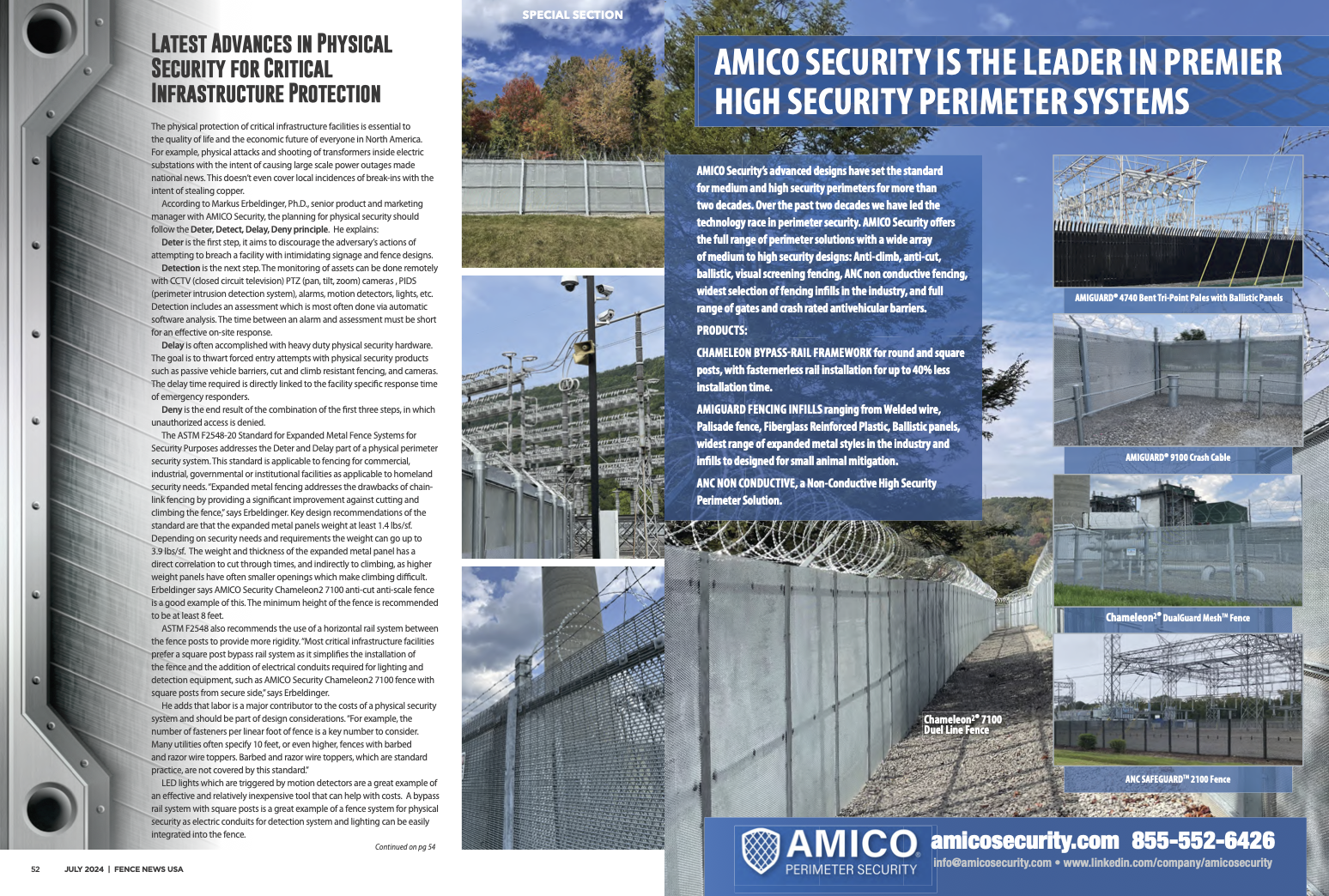
According to Markus Erbeldinger, Ph.D., senior product and marketing manager with AMICO Security, the planning for physical security should follow the Deter, Detect, Delay, Deny principle. He explains: Deter is the first step, it aims to discourage the adversary’s actions of attempting to breach a facility with intimidating signage and fence designs. Detection is the next step.
The monitoring of assets can be done remotely with CCTV (closed circuit television) PTZ (pan, tilt, zoom) cameras , PIDS (perimeter intrusion detection system), alarms, motion detectors, lights, etc. Detection includes an assessment which is most often done via automatic software analysis. The time between an alarm and assessment must be short for an effective on-site response.
Delay is often accomplished with heavy duty physical security hardware. The goal is to thwart forced entry attempts with physical security products such as passive vehicle barriers, cut and climb resistant fencing, and cameras. The delay time required is directly linked to the facility specific response time of emergency responders.

